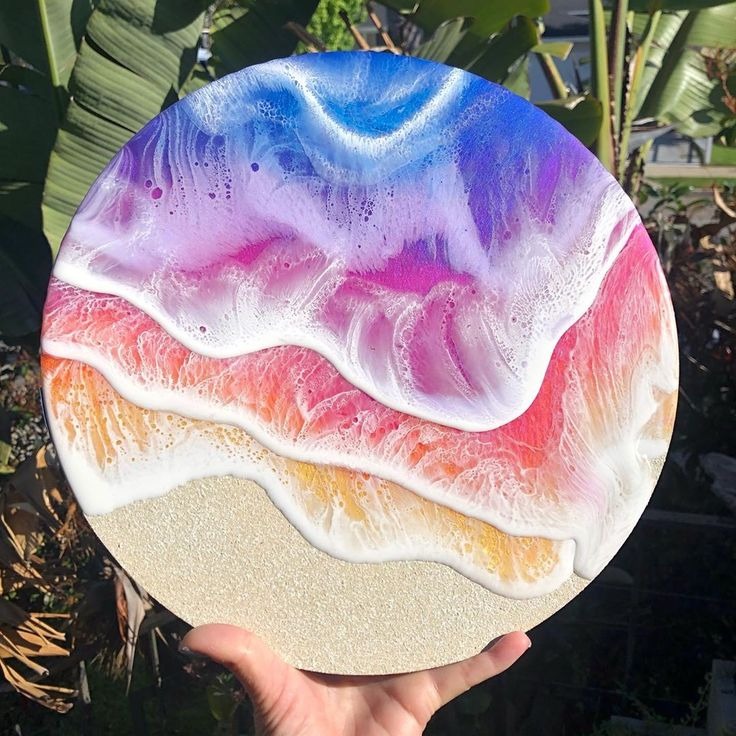Introduction and Context
Epoxy resins occupy a unique intersection of chemistry and craftsmanship, offering a palette of properties that span from molecular precision to grand architectural installations. Celebrated for their remarkable adhesion, chemical resilience, mechanical strength, and aesthetic adaptability, epoxies underpin critical advances in industries as varied as aerospace, marine, electronics, and fine art. This exhaustive treatise unpacks the molecular foundations, charting the evolution of epoxy chemistry; surveys the breadth of formulations and processing methodologies; examines performance characteristics under mechanical, thermal, and electrical stress; illuminates the latest in environmental stewardship; and peers ahead to the innovations poised to redefine what epoxy can achieve.
Molecular Foundations and Reactivity
At its essence, an epoxy resin centers on the oxirane ring, a three‑membered cyclic ether that endows the molecule with significant ring strain and reactive potential. Monomers typically present glycidyl functionalities bound to aromatic or aliphatic backbones, establishing the groundwork for tailored rigidity or flexibility. Upon introduction of a curing agent—frequently amines, anhydrides, phenolic novolacs, or thiol‑based hardeners—a cascade of ring‑opening reactions and crosslinking events unfolds. The orchestrated interplay of stoichiometric balance, functional‑group placement, and catalyst presence governs cure kinetics, gel time, and the eventual glass transition threshold of the cured matrix.
Historical Milestones and Technological Evolution
Epoxy’s origins trace back to laboratory curiosities in the aftermath of global conflict, as visionaries in polymer science sought adhesives and coatings capable of surpassing earlier thermosetting materials. Early commercial adoption occurred in high‑stakes arenas such as aircraft assembly and guided‑missile fabrication, driven by the need for lightweight bonding solutions. Subsequent decades witnessed iterative leaps: introduction of aromatic anhydride curatives to elevate thermal stability; development of cycloaliphatic epoxies for ultraviolet curing and outdoor resilience; advent of high‑functionality novolac resins delivering dense crosslink networks; and, more recently, hyperbranched and dendritic epoxies unlocking unprecedented processability and performance synergies.
Formulation Diversity and Design Strategies
The hallmark of epoxy technology resides in its formulation versatility. By blending base resins with an array of reactive diluents, thixotropic agents, flexibilizers, and specialty additives, formulators sculpt unique rheological profiles, cure regimes, and end‑product characteristics. Mineral fillers such as silica and alumina boost hardness and abrasion resistance, while metallic powders and carbon‑based nanomaterials impart electrical or thermal conductivity. Rubber toughening agents mitigate brittleness, and flame‑retardant synergists enhance safety credentials. Decorative pigments, optical brighteners, and UV stabilizers extend creative and outdoor applications. Every additive selection and concentration balance echoes through the final material’s cure behavior and service performance.
Composite Architectures and Reinforcement Technologies
Epoxy resins excel as matrices for composite materials, marrying seamlessly with reinforcing fibers—glass, carbon, aramid—to yield laminates that eclipse metals in specific stiffness and strength. Vacuum infusion and resin transfer molding techniques ensure high fiber volume fractions and void‑free consolidation. Pre‑impregnated fabrics, known as prepregs, offer precise resin content and rapid lay‑up for aerospace and high performance sporting goods. Three‑dimensional woven architectures and multiaxial reinforcements address out‑of‑plane loadings, while nanoparticle dispersions enhance interlaminar toughness and thermal conductivity. The resulting composites deliver tailorable directional properties, reduced weight, and superior fatigue life.
Processing Methodologies and Quality Assurance
Producing epoxy systems at scale demands meticulous control over mixing ratios, degassing, and cure profiles. Automated metering and static mixing apparatus ensure consistent blending of resin and hardener, preventing localized stoichiometric imbalance. Vacuum chambers remove dissolved gases, forestalling microvoids that compromise strength and dielectric integrity. Programmable cure cycles within convection or infrared ovens facilitate staged temperature ramps, balancing exothermic control with thorough network formation. Quality is assessed through differential scanning calorimetry to confirm residual epoxy conversion, dynamic mechanical analysis to gauge storage modulus and damping behavior, and adhesive pull‑off testing to verify bond strength on treated substrates.
Mechanical Performance Under Stress
Cured epoxy exhibits a combination of high tensile modulus, notable flexural strength, and exceptional shear resistance, making it ideal for load‑bearing adhesives and structural members. Its low creep deformation under sustained load enhances reliability in long‑term installations. When reinforced with nanoparticles or elastomeric modifiers, epoxy’s fracture toughness escalates, arresting crack propagation and resisting impact energy. Fatigue performance in composite structures further benefits from optimized fiber–matrix adhesion and controlled residual stresses, ensuring prolonged service even under cyclical mechanical loading.
Thermal Stability and Conductivity
Standard epoxies maintain functional stability up to elevated service temperatures dictated by their glass transition point, often surpassing ambient extremes encountered in typical applications. High‑temperature grades, formulated with aromatic backbones and robust curing agents, endure sustained heat exposure in engine compartments and industrial ovens. While the intrinsic thermal conductivity of polymers remains modest, strategic inclusion of ceramic microspheres, metal flakes, or graphene derivatives can create pathways for heat dissipation, enabling thermally managed housings and electronics substrates.
Electrical Insulation and Conductive Variants
Epoxy’s innate dielectric strength and low dielectric loss render it indispensable for insulating transformers, switchgear, and circuit boards. Encapsulation or potting of delicate electronic assemblies shields against moisture, vibration, and chemical assault. Simultaneously, conductive epoxies—doped with silver particles, nickel powders, or carbon nanotubes—facilitate electromagnetic interference shielding, serve as electrically conductive adhesives, and enable printed flexible circuits. Careful management of percolation thresholds and contact resistances ensures reliable performance in demanding environments.
Surface Engineering and Adhesion Enhancement
Robust adhesion hinges on substrate preparation. Mechanical abrasion—sandblasting or grit‑blasting—texturizes metal surfaces, while chemical primers introduce functional moieties compatible with epoxy crosslinkers. Silane coupling agents form molecular bridges between inorganic substrates like glass or ceramic and epoxy networks, dramatically improving bond durability. Plasma, corona, and ultraviolet/ozone treatments activate inert polymeric surfaces, enabling epoxy to adhere to otherwise challenging plastics. Layered coating strategies, combining epoxy base coats with polyurethane or polyaspartic topcoats, yield surfaces that are both protective and decorative.
Applications Across Industry Sectors
Epoxy’s footprint spans industrial, commercial, and consumer realms. Structural adhesives bond airframes, railcars, and wind turbine blades; advanced composites craft hulls of racing yachts and bodies of performance automobiles; floor and wall coatings deliver hygienic, seamless surfaces in food processing and healthcare; electronic encapsulants protect high‑density circuit arrays; and art installations harness translucent epoxy to encapsulate organic materials and pigments in stunning three‑dimensional displays. Specialty medical epoxies secure prosthetic components, while durable marine coatings resist saltwater corrosion and biofouling.
Environmental Impact and Health Considerations
Handling of uncured epoxies and curing agents demands rigorous safety practices. Volatile amine vapors can provoke respiratory irritation, and skin contact with reactive constituents risks sensitization and dermatitis. Personal protective equipment—chemical‑resistant gloves, protective eyewear, and adequate ventilation—constitutes the first line of defense. Waste management protocols dictate segregation of resin‑laden rags and surplus material for approved chemical disposal. Regulatory frameworks increasingly limit volatile organic compound emissions, steering formulators toward low‑odor, high‑solids, or water‑borne epoxy systems.
Sustainable Innovations and Recycling Strategies
The pursuit of green chemistry has spurred development of bio‑based epoxy monomers sourced from plant oils, tannins, and lignin, offering reduced reliance on petroleum feedstocks. Novel catalysts and curing pathways aim to match performance profiles of petrochemical derivatives while delivering lower carbon footprints. End‑of‑life considerations give rise to depolymerizable epoxies that cleave under specific chemical or thermal conditions, facilitating recovery of fibers and reusable monomers. Solvent‑based and supercritical fluid depolymerization techniques progress toward commercial viability, promising circular material flows in composite industries.
Cutting‑Edge Research and Future Horizons
Emerging frontiers in epoxy science introduce self‑healing matrices, where microencapsulated healing agents rupture at damage sites, polymerizing in situ to restore integrity. Incorporation of phase‑change materials into epoxy coatings offers passive thermal management for electronics and building facades. Three‑dimensional printing of epoxy composites via projection microstereolithography and direct ink writing unlocks complex geometries and functional gradients previously unattainable. Integration of sensing elements—piezoelectric or optical fibers—into cured epoxy structures enables real‑time monitoring of strain, temperature, and chemical exposure, ushering in adaptive “smart” materials.
Illustrative Case Studies and Industry Insights
In one landmark wind energy initiative, adoption of a nanoclay‑reinforced, heat‑curing epoxy adhesive extended rotor blade lifespan by mitigating microcrack formation under cyclic loading. A leading consumer electronics manufacturer transitioned to low‑viscosity, moisture‑tolerant epoxies for faster inline potting, achieving higher throughput and enhanced device reliability. In architectural restoration, a transparent, UV‑stable epoxy consolidated crumbling stonework, protecting heritage facades without altering visual character.
Visionary Outlook and Concluding Reflections
As global priorities shift toward sustainability, resilience, and multifunctionality, epoxy chemistry stands poised to evolve in step. Green monomer sources, recyclable network architectures, and embedded sensing capabilities promise materials that not only perform but also adapt, heal, and communicate. Digital fabrication techniques will democratize bespoke part creation, while nanotechnology will fine‑tune thermal, electrical, and mechanical properties at the molecular scale. Through the synergy of scientific discovery and engineering practice, epoxy resins will continue to redefine the boundaries of what is possible—bonding together not just substrates, but the ideals of innovation, responsibility, and artistic expression in a rapidly changing world.

